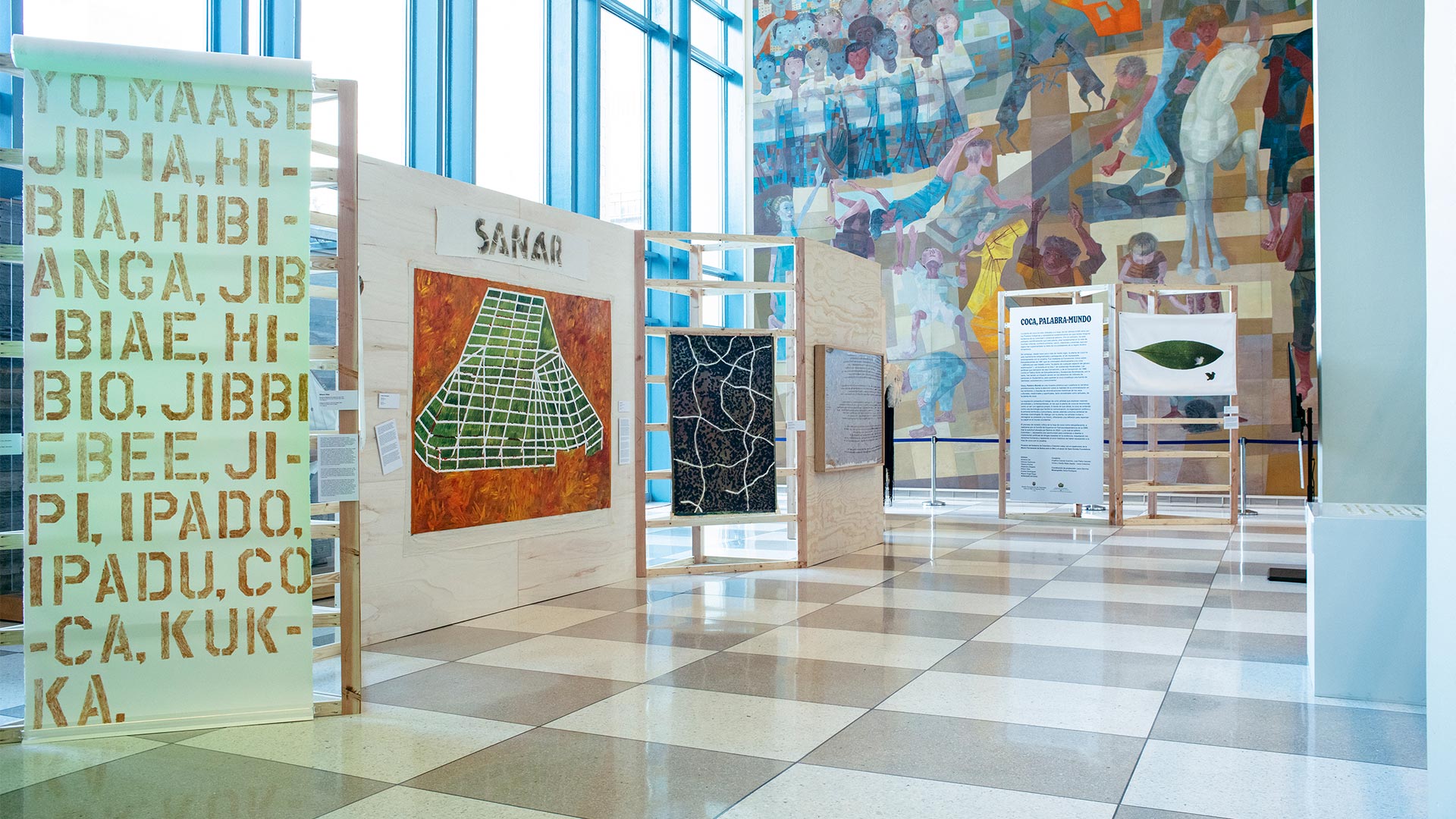Partners: Open Society Foundation, Permanent Missions of Colombia and Bolivia to the UN, and Ministry of Culture of Colombia.
Timeline: Nov 2024 to Jan 2025.
Approach: Community Engagement, Curatorial Practices, Futures thinking.
Topics: coca leaf, decoloniality, indigenous and Latinamerican futures.
Team: Liana Collective (Juan Pablo Caicedo, Angélica Cuevas and Giselly Mejia Zapata)
My role: Curator, project manager, researcher, producer.
Project Statement
Photo by Mariana Reyes.
This exhibition was part of the COCAWORLDS project.
This time we (Liana Collective) partnered with The Permanent Missions of Colombia and Bolivia to the UN, The Ministry of Culture of Colombia, and Open Society Foundations to present an exhibition focused on one of the curatorial research lines: Coca-Wor(l)ds or Coca, Palabra-Mundo in Spanish.
The exhibition was on for one week in November 2024 in the UN Headquarters in New York and later moved to Open Society Foundations until January 2025.
The exhibition invited the international community and UN delegates to reflect on the benefits of the coca plant for Indigenous and peasant communities and to question the historical error made by the United Nations in 1961 in classifying it as a narcotic.
Coca, Palabra-Mundo is curated by the Liana Collective and features works by Colombian and Bolivian artists:
- Aimema Uai (La Chorrera, Colombia, 1996)
- Edinson Quiñones (La Plata, Colombia, 1982)
- Tatiana Arocha (New York, USA, 1974)
- Alejandra Delgado (La Paz, Bolivia, 1977)
- Wilson Díaz (Pitalito, Colombia, 1963)
- Andrés Domínguez (Leticia,Colombia, 1983)
- Miguel Ángel Rojas (Bogotá, Colombia, 1946)
- Collective NOMASMETÁFORAS
- Julián Dupont (Popayán, Colombia, 1985)
- Clara Melniczuk (La Ciotat, France, 1991)
Projects details
For over 8,000 years, the coca leaf has been an integral part of the lives and cultures of Indigenous and peasant communities in the Andean-Amazon region. Yet this sacred plant has been stigmatized and criminalized internationally by being equated with cocaine. The 1961 Single Convention included the coca leaf in its list of narcotics, leading to decades of public policies focused on the persecution of both the plant and the communities that use it. This historical mistake has caused immense harm to millions, fragmented entire communities, and led to irreversible environmental damage.
Coca, Palabra-Mundo exhibition seeked to shift the negative perception of coca, reclaiming the right of Indigenous and peasant peoples to use the plant. Beyond being a symbol of life, health, and spirituality, coca represents a source of identity and knowledge for millions in South America. The
exhibition invited reflection on the historical biases surrounding the coca plant and the urgent need to correct a mistake with profound consequences.
The exhibition features the work of eight artists, most of whom were born or work in regions where coca cultivation is widespread. Their works reflect ancestral and contemporary visions shaped by personal histories and the experiences of the indigenous communities to which they belong or work closely with. In these works, coca is recognized as a being with its own agency: a technology that facilitates communication, political organization, and communal and territorial harmony.
The exhibition was accompanied by a public programming:
- Guided Tours at the United Nations
Tour in Spanish and English led by the curators. - Panel Discussion at the UN: Beyond Declassification – Detoxifying Narratives Around the Coca Plant
A conversation to challenge the hegemonic negative connotation attributed to the plant, which has persisted through decades of misinformation and prejudice, and continues to generate violence and innocent victims across South America. - Dialogue with Colombian Artists – Art, Coca and Drug Policies
Discussion with Colombian artists who work with the coca leaf as a medium to transform policies and narratives associated with drugs. - Screening – Coca Vision
Screening of a photographic series and two video art pieces by artists showcased in the exhibition. It will also include a conversation reflecting on their works and the themes they explore. - Coca watercolor workshop: Tinta Dulce – Poetics of the Future
Watercolor workshop using coca-based inks. Led by the Colombian collective Ginger Blonde and curator Giselly Mejía, this workshop invites participants to imagine and illustrate possible futures for the coca plant.
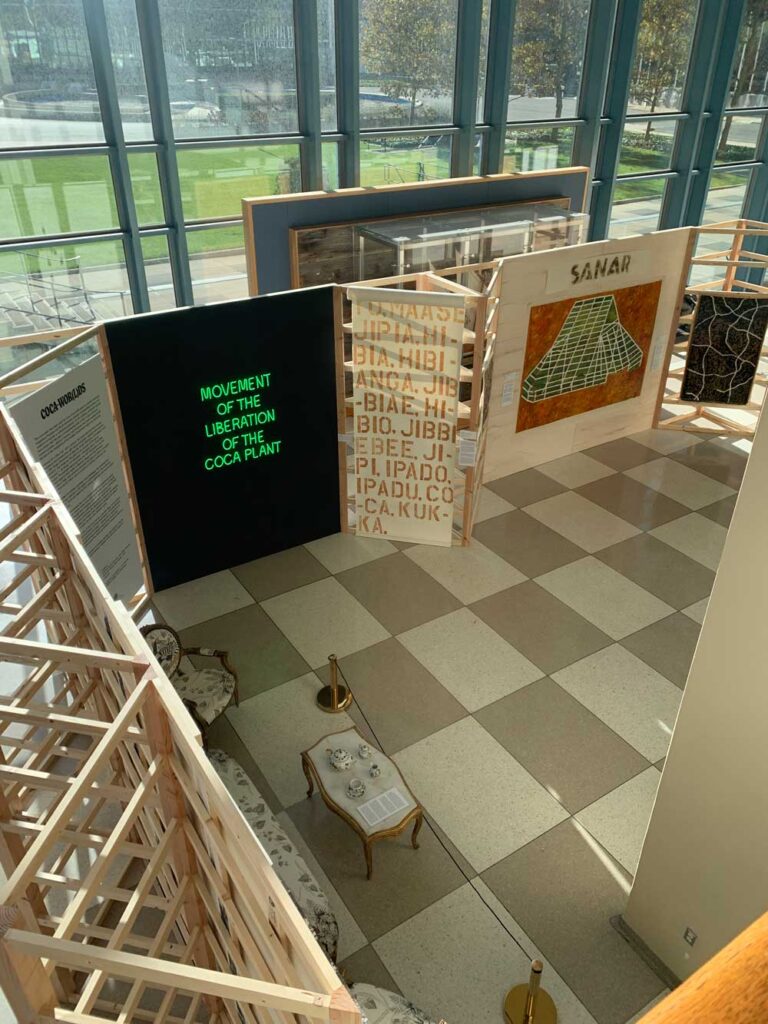
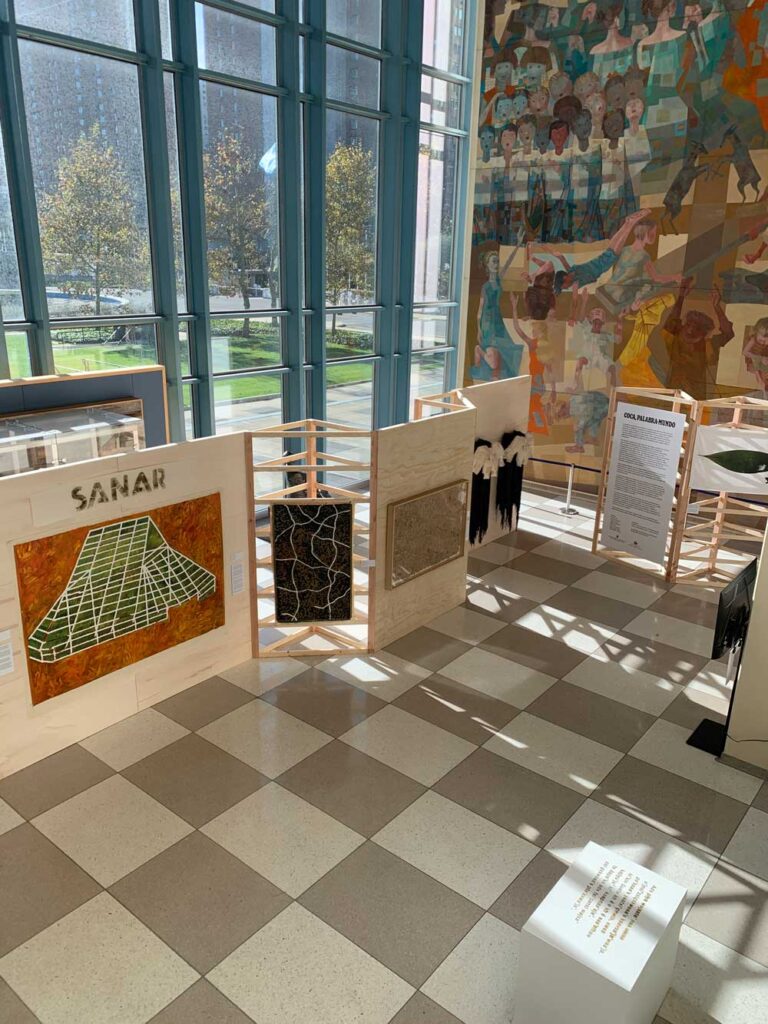
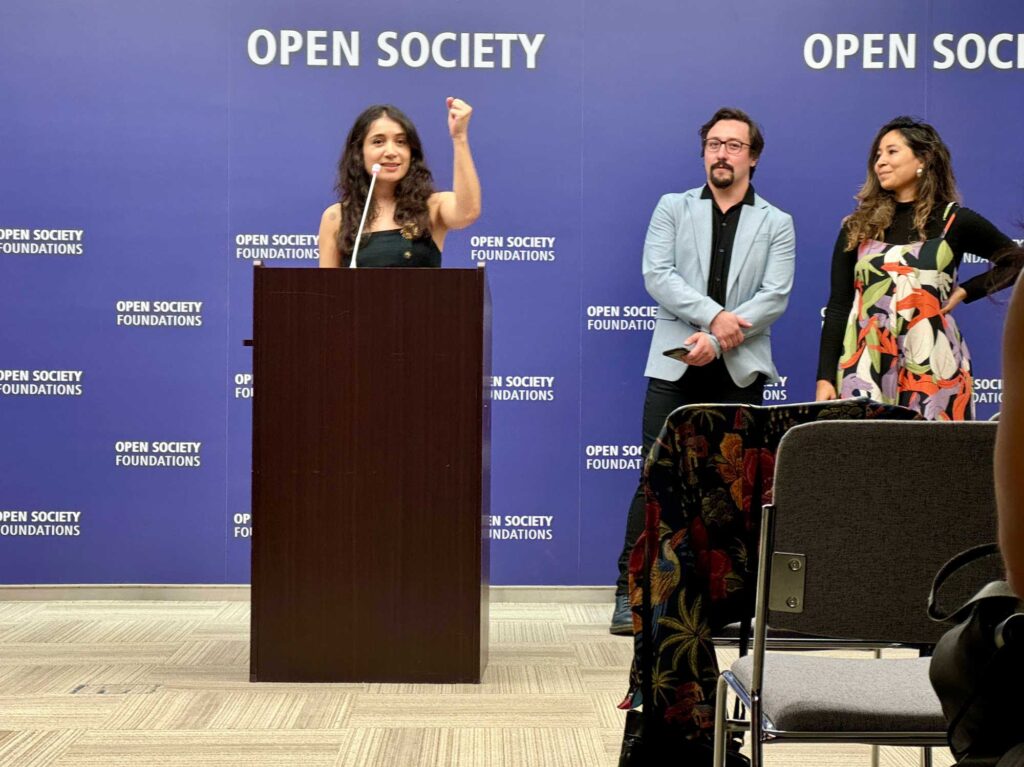
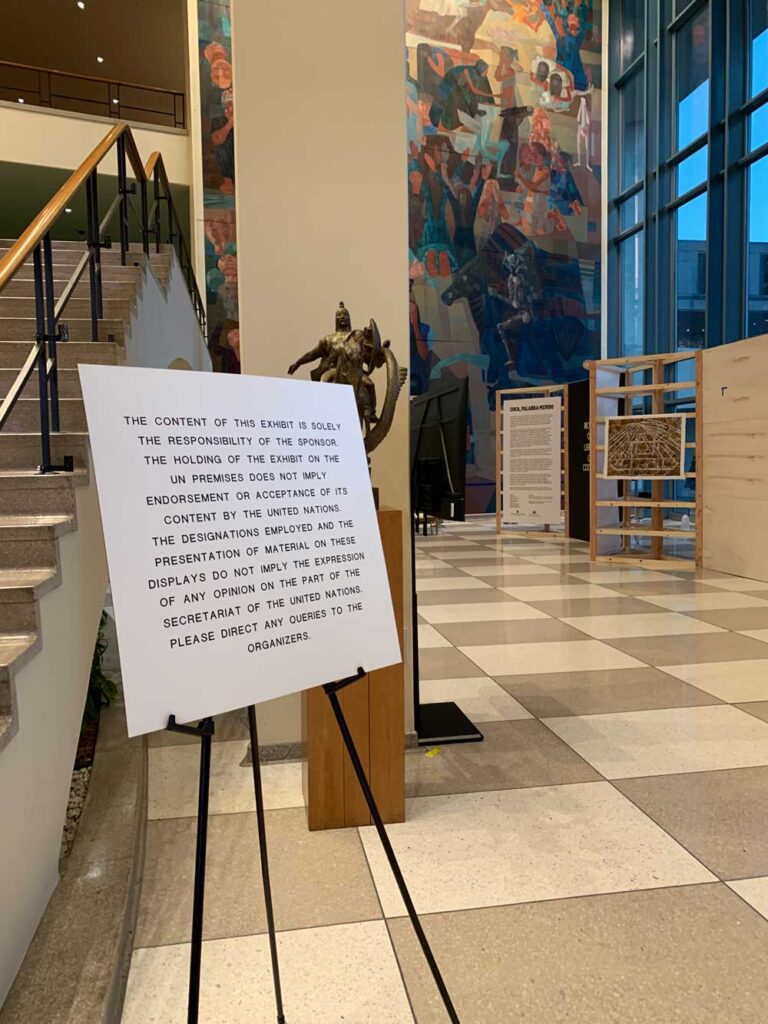
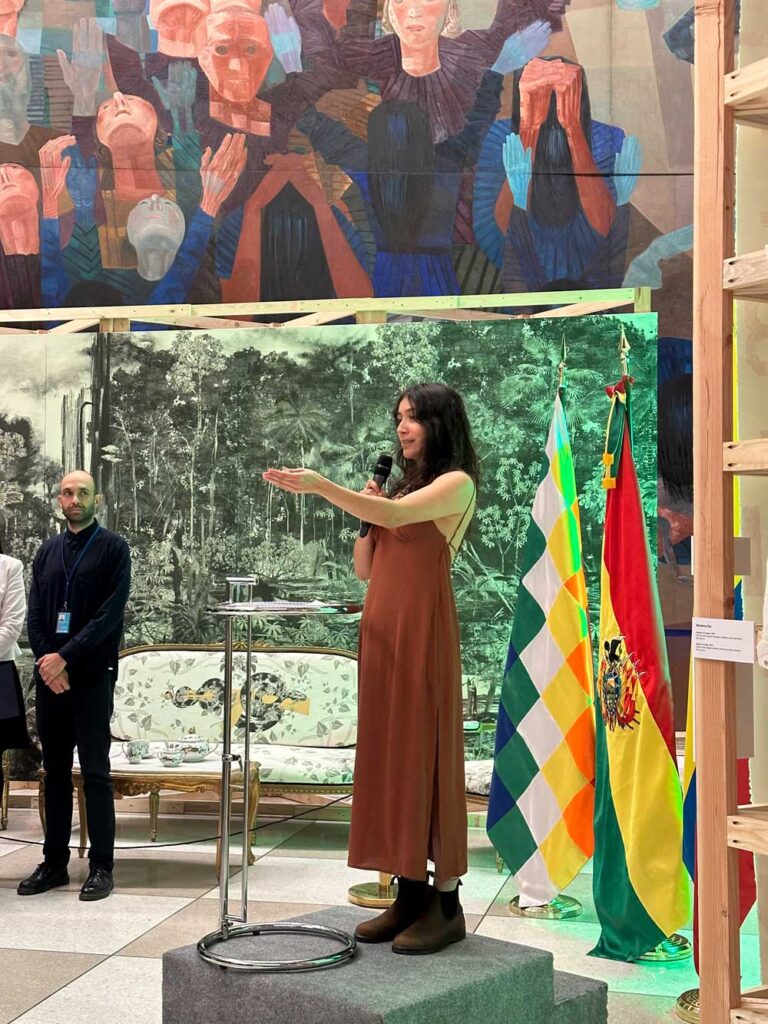
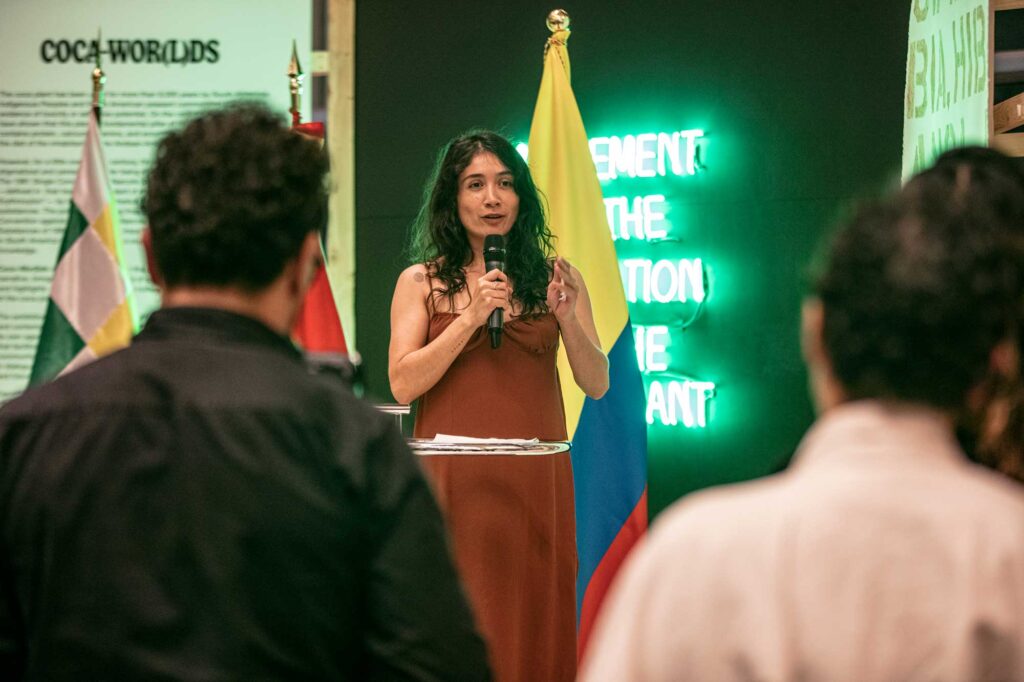
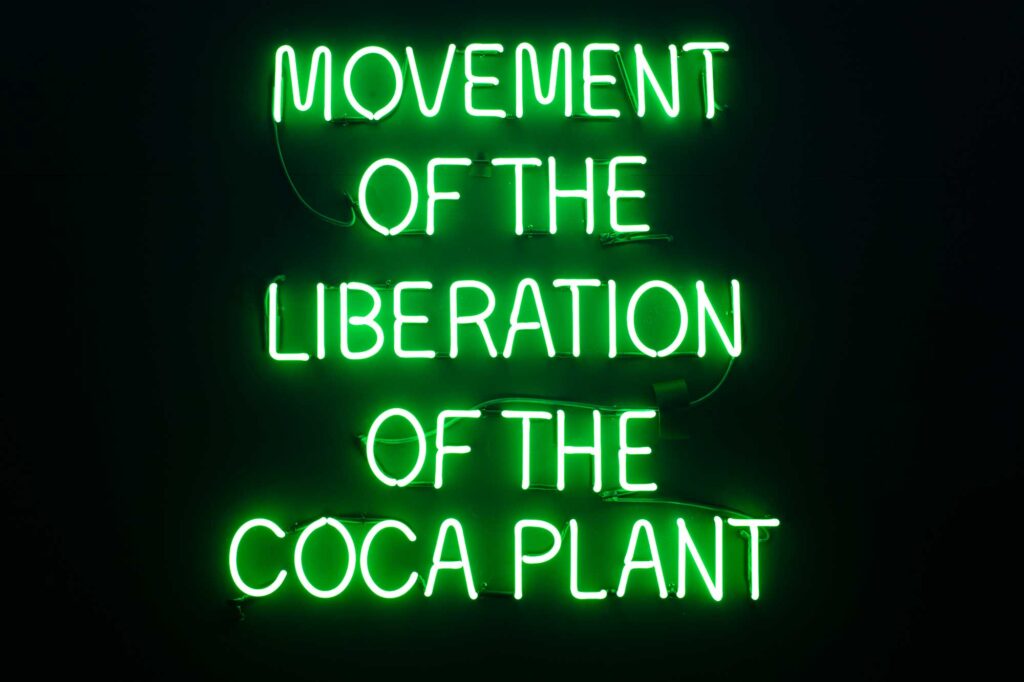
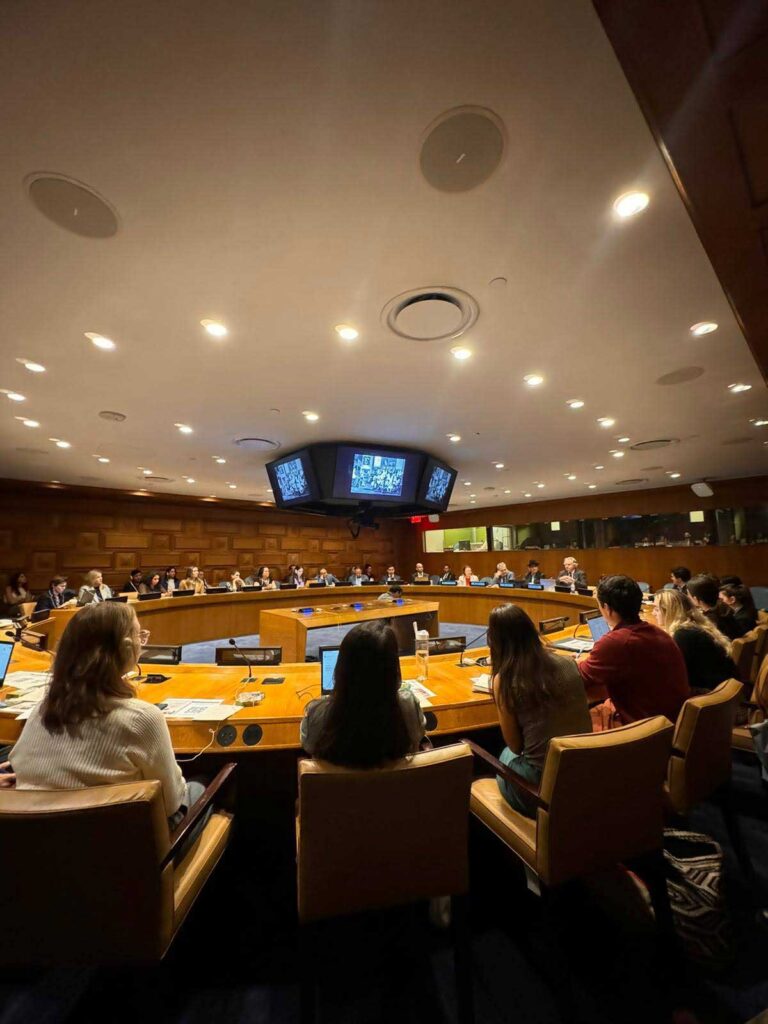
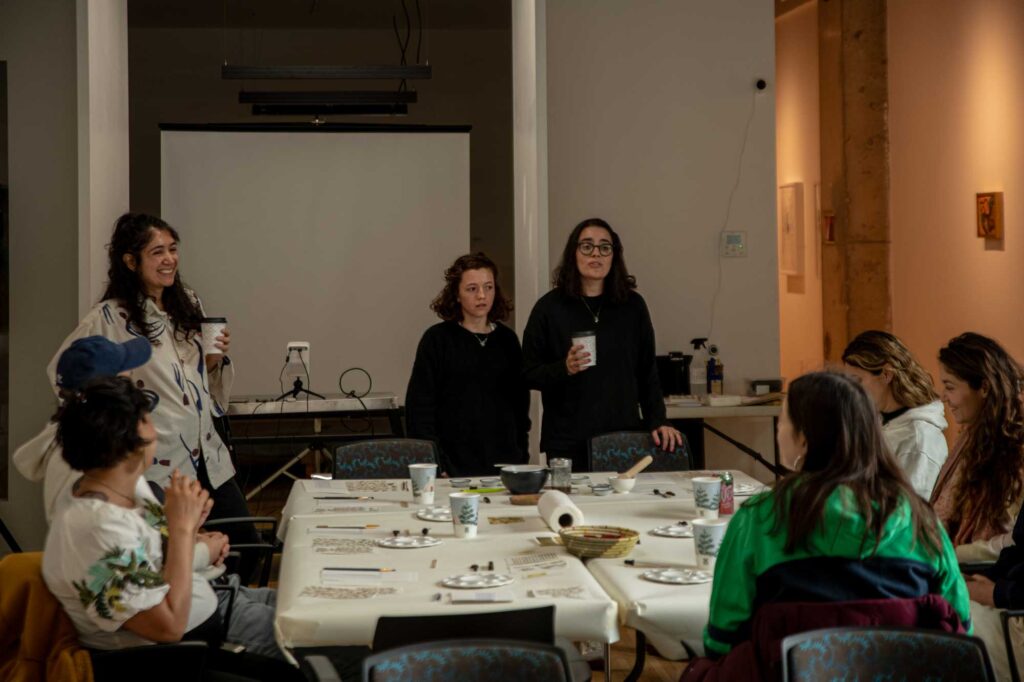
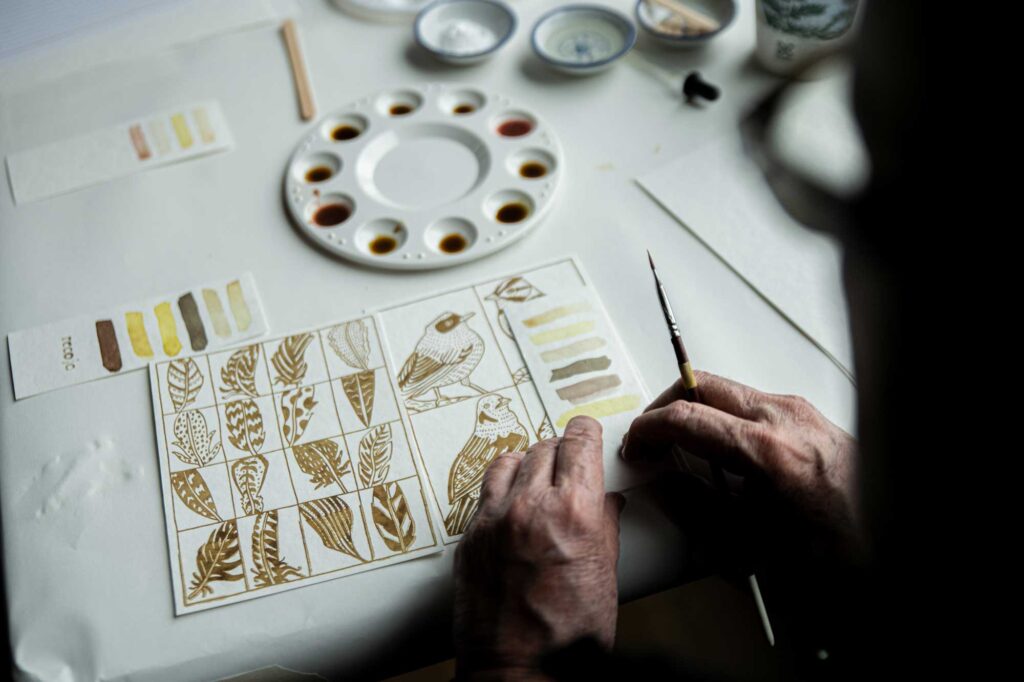
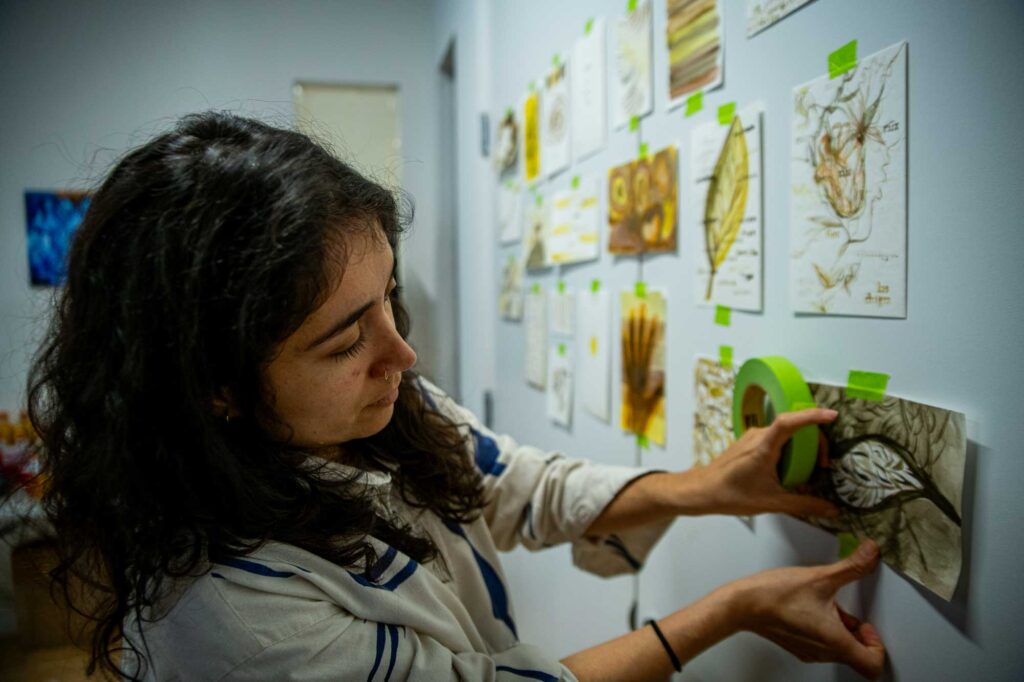
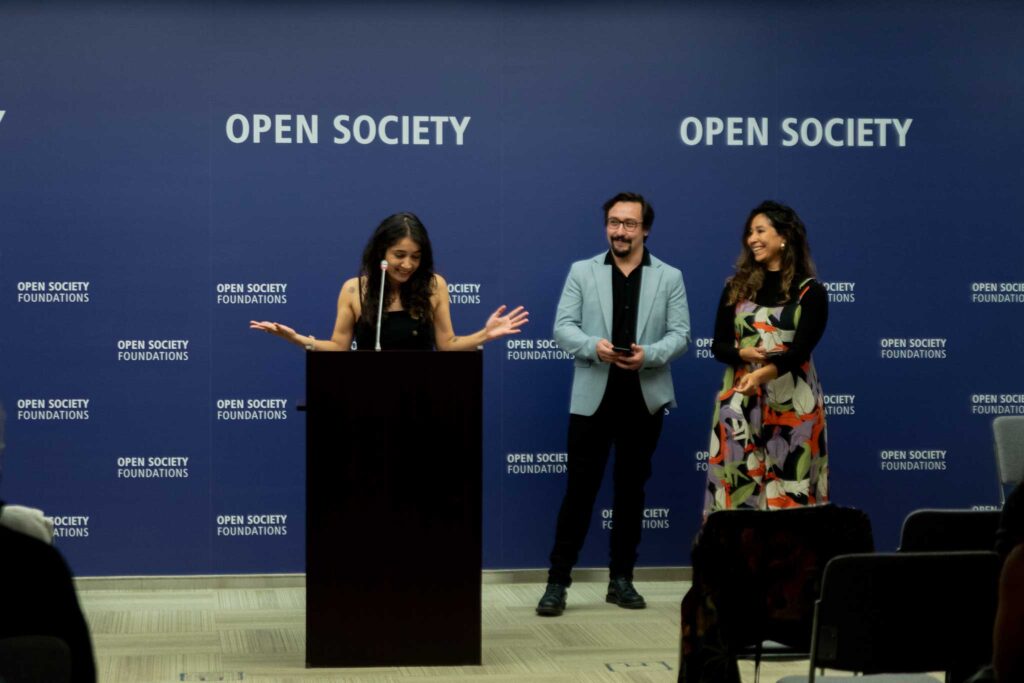
Photos by Mariana Reyes and Alejandro Neira.
